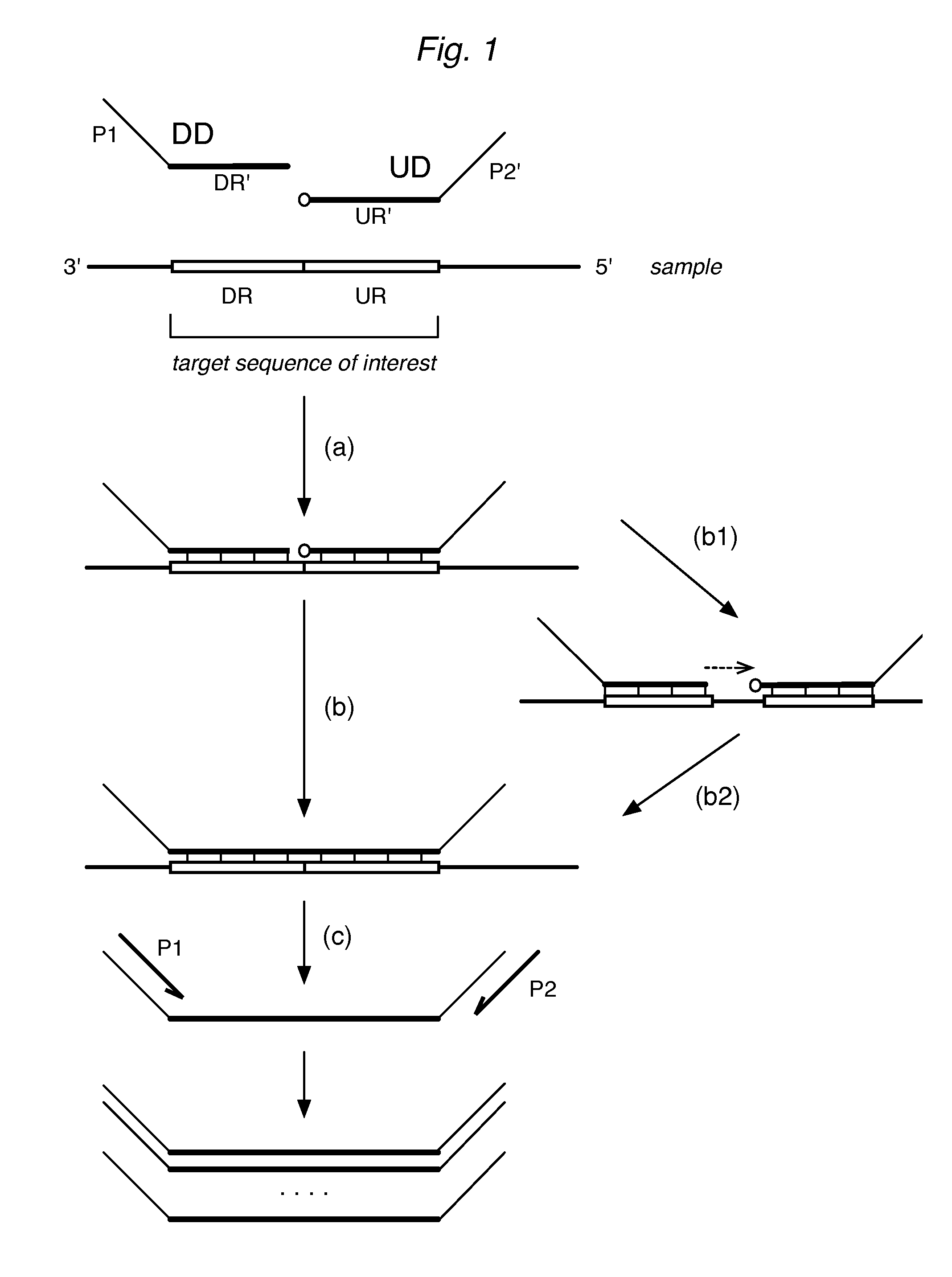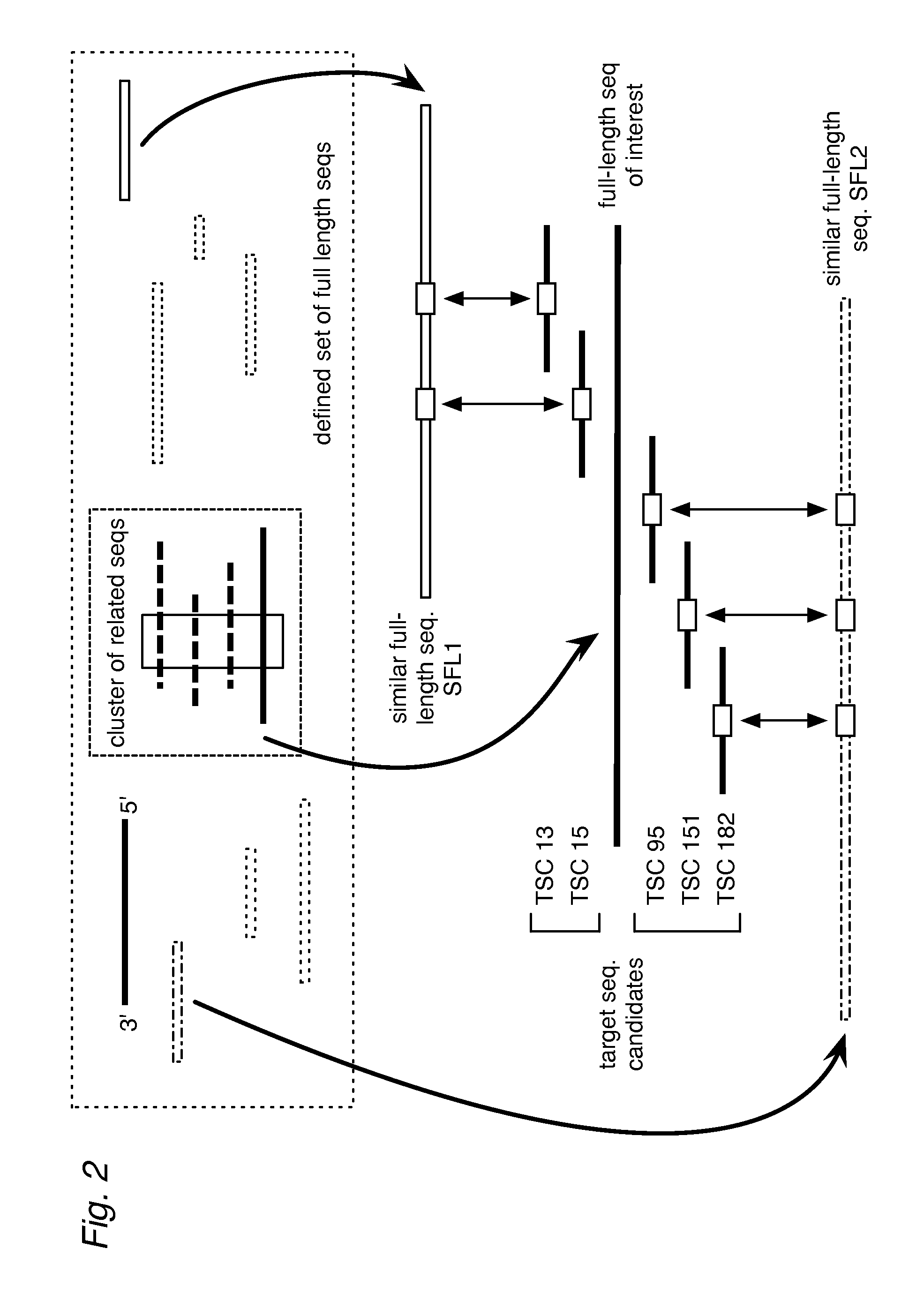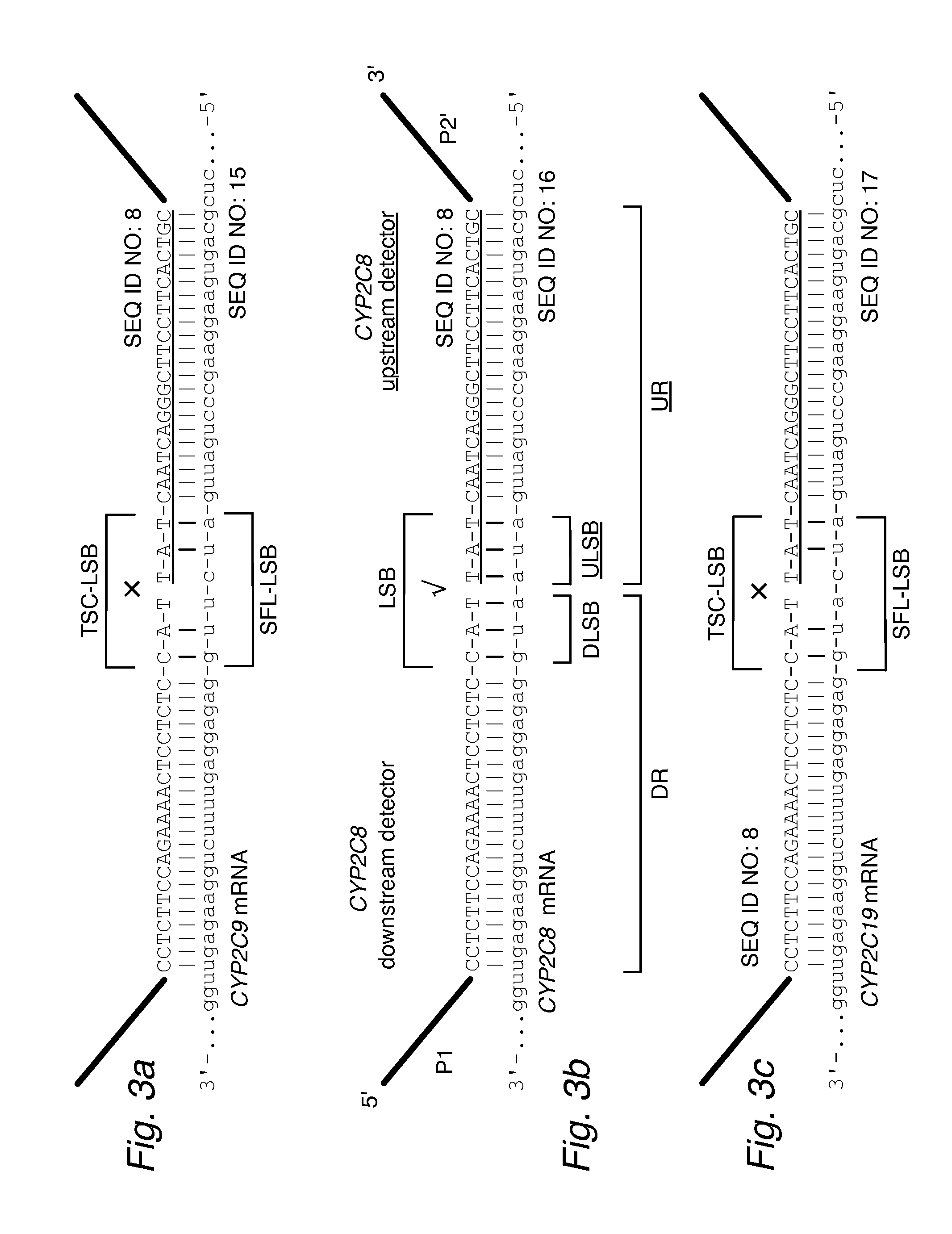Profiling Expression at Transcriptome Scale
a transcriptome and transcript technology, applied in the field of transcriptome profiling, can solve the problems of limiting the plexity of such assays to selectively detect more than 1000 target sequences, insufficient selectiveness, etc., and achieve the effect of eliminating potential false-positive results
- Summary
- Abstract
- Description
- Claims
- Application Information
AI Technical Summary
Benefits of technology
Problems solved by technology
Method used
Image
Examples
example 1
[0069]A representative method is provided to illustrate ligation assays without the attenuators of the invention. Here, over 100 RNA expression products were detected in a sample of cells using a multiplex assay format. For each expression product, the assay was designed to detect one or more sequences of interest within the full sequence of the product. For example, in human cells, a GADPH gene encodes the enzyme glyceraldehyde 3-phosphate dehydrogenase; three different sequences of interest within the RNA transcript of the GADPH gene were independently detected. One such RNA sequence, identified here as GADPH—2, was
(SEQ ID NO: 1)5′-CGACCACUUUGUCAAGCUCAUUUCCUGGUAUGACAACGAAUUUGGCUACA-3′
where a 5′ end was designated “upstream” (underlined) and the 3′ end was designated “downstream” for the direction of transcription and translation. The same GADPH—2 sequence can be shown in the 3′-to-5′ direction for later convenience of discussion:
(SEQ ID NO: 1)3′-ACAUCG...
example 2
Mutated Sequence Attenuators
[0076]In this experiment, the DD and / or UD were replaced with various attenuator oligos having one, two, or three mismatched bases. As discussed in Example 1, the DR′ of the DD for GAPDH—2 had the sequence 5′-TGTAGCCAAATTCGTTGTCATACCA-3′(SEQ ID NO:3), so that the three nucleotides at the 3′ terminus can be represented as -CCA-3′. The full sequence can be designated as the wildtype DD. Mutated versions of the DD were prepared, each having 3′-terminal sequences as follows (mutated bases shown in bolded lowercase):
downstreamattenuator3′-terminusmutated positionswildtype DD-CCA0GAPDH_MM3_0b_D-CCt1GAPDH_MM3_1b_D-CgA1GAPDH_MM3_2b_D-gCA1GAPDH_MM3_3b_D-gCt2GAPDH_MM3_5b_D-ggA2GAPDH_MM3_6b_D-Cgt2GAPDH_MM3_4b_D-ggt3
Similarly, the UR′ of the UD had the sequence 5′-GGAAATGAGCTTGACAAAGTGGTCG-3′ (SEQ ID NO:3), which can be designated as the wildtype UD, with a 5′-terminal sequence of / 5Phos / GGA-. In this example, the sequence derived from the upstream regions remains un...
example 3
Pattern Match Scores
[0078]The values shown in FIG. 5 provide the percent frequency of ligation in assays using downstream and upstream detector oligos with various patterns of matches (uppercase bases) and mismatches (lowercase bases) when hybridized to a template strand. The same values also indicate the frequency of ligation when combinations of downstream and upstream detectors are hybridized to a template having a different sequence, such as a similar full-length sequence (SFL).
[0079]FIG. 5b provides the ligation frequencies for the combinations of matches (I) and mismatches (X) in the form of match scores (MS) for a TSC's LSB with the DLSB and ULSB of an SFL:
ligation frequencyMS 0.00-0.22%0.9 highly selective 0.22-0.50%0.7 0.50-20.00%0.420.00-100.00%0.1 poor selectivity
The values in FIG. 5c follow a more stringent scoring for the frequencies in FIG. 5:
0.00-0.05%0.9 highly selective0.05-0.20%0.70.20-2.00%0.42.00-100.00%0.1 poor selectivity
A scoring similar to FIG. 5b is provided...
PUM
| Property | Measurement | Unit |
|---|---|---|
| Fraction | aaaaa | aaaaa |
| Fraction | aaaaa | aaaaa |
| Length | aaaaa | aaaaa |
Abstract
Description
Claims
Application Information
 Login to View More
Login to View More - R&D
- Intellectual Property
- Life Sciences
- Materials
- Tech Scout
- Unparalleled Data Quality
- Higher Quality Content
- 60% Fewer Hallucinations
Browse by: Latest US Patents, China's latest patents, Technical Efficacy Thesaurus, Application Domain, Technology Topic, Popular Technical Reports.
© 2025 PatSnap. All rights reserved.Legal|Privacy policy|Modern Slavery Act Transparency Statement|Sitemap|About US| Contact US: help@patsnap.com



